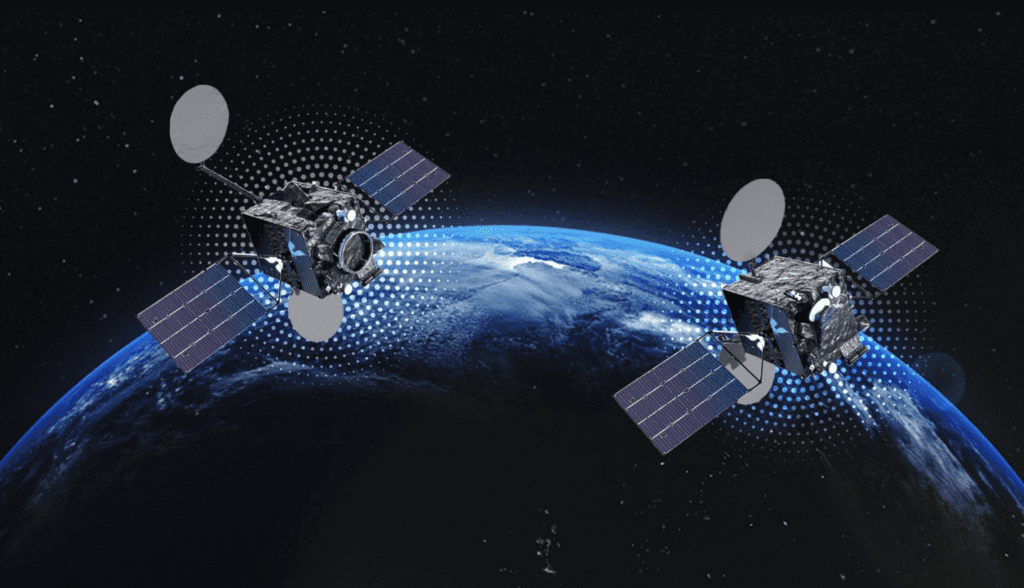
“Focusing on the quality of the experience—and the economics of the solution—is how we’re going to drive this in the direction it needs to go in the long term.” – Intelsat’s Jeff Sare, President of Commercial Aviation (Photo: Intelsat)
For many airlines, it is becoming increasingly important to offer in-flight connectivity. The quality of Wi-Fi available onboard an aircraft has a significant impact on a passenger’s satisfaction. The connectivity needs to be both consistent and affordable. IFC is most commonly delivered via satellite, which many of the major service providers use, including Panasonic, Gogo, Viasat, Thales, Inmarsat, and Intelsat.
At the recent APEX Expo, Jeff Sare, President of Intelsat Commercial Aviation, offered his perspective on what the future holds for connectivity. He explained during a panel discussion that Intelsat does not view their constellation as a hybrid network. “It’s a network with different assets and technologies that are all brought together to deliver the end-user experience,” he said. “It’s all about the passenger experience.”

Jeff Sare of Intelsat is pictured above (second from the right) during a panel discussion at the APEX Expo, moderated by NetForecast Director of Business Development – Transportation, Mary Rogozinski. (Photo: Jessica Reed)
While Intelsat currently has more than 60 geosynchronous satellites, Sare remarked that the main focus is on the quality of the in-flight experience. The service is centered entirely around its customers. “At the end of the day, if a passenger on an airplane isn’t getting the service they need, they’re going to complain,” he said.
Intelsat’s 2Ku satellite connectivity solution was recently chosen by Virgin Australia for the airline’s existing fleet of Boeing 737 NG aircraft. The satellite services provider also announced last week that it will be the first commercial customer for Swissto12’s HummingSat product line. Intelsat placed an order for the IS-45 satellite which will provide Ku-band fixed satellite services to customers.
Intelsat’s system enables the correlation of data from an airline on customer satisfaction with particular metrics, such as page load times. With this correlation, it is possible to establish a baseline for the passengers’ experience with the IFC and to determine what improvements will have a positive impact.
Sare also noted the importance of considering costs associated with offering IFC. “All that has to be done in a way that is economically sound so that the passenger can afford to use the service,” he stated.
As more airlines offer in-flight Wi-Fi, it may be a better idea to build the cost of the service into the price of the ticket. “Nothing is free,” Sare said. “It’s about bundling services and how customers want to differentiate from their competition. Focusing on the quality of the experience—and the economics of the solution—is how we’re going to drive this in the direction it needs to go in the long term.”
Intelsat announced a global distribution agreement with OneWeb in August. The companies are partnering to offer a multi-orbit in-flight connectivity (IFC) service. Sare commented on the partnership with OneWeb during the panel discussion, saying, “It’s another set of assets, another set of tools to continue to improve our network, to provide coverage in places where our previous fleet by itself wasn’t able to provide coverage, and to be able to take advantage of the kinds of things that a lower latency, more ubiquitous coverage can take advantage of.”
The service that Intelsat delivers matters more than which specific assets are used, Sare noted. “If it makes the most sense to use the LEO [low-earth orbit] network at a particular time, we’ll use the LEO network. If it makes more sense to use GEO [geostationary orbit], we’ll use GEO. Everything has its pluses and minuses.”
In the near future, it will be necessary to be able to “talk” to multiple satellites simultaneously. It’s increasingly important today to be able to shift between satellites quickly, Sare shared. Intelsat’s approach for the near-term will be step-by-step: “We have our traditional geosynchronous orbits, we’re building the software-defined network, we’re launching software-defined satellites, we’re partnering with OneWeb. We’re creating an electronically steered antenna [ESA] and terminal with multiple modems in it so we can talk to the satellites—initially one at a time—just bringing more flexibility to the system as we go forward.”
He commented that airline customers have been much more interested in the CO2 impact of the network than anticipated. “All of them are approaching these new sets of technologies in an appropriately prudent and thoughtful manner,” he said.